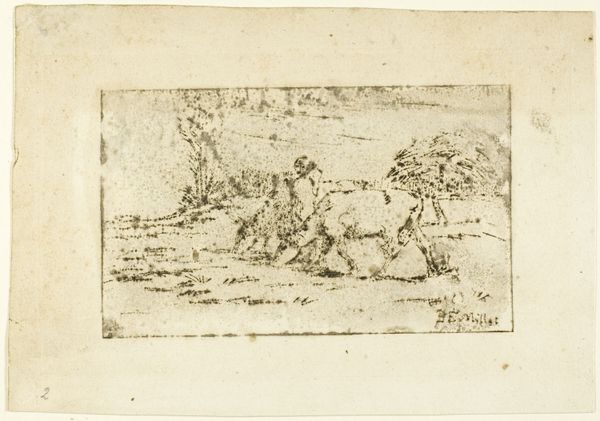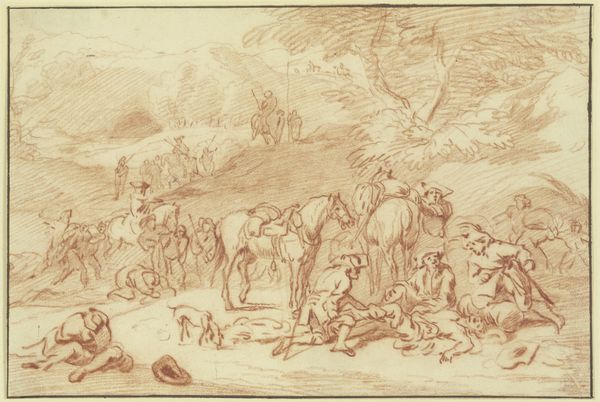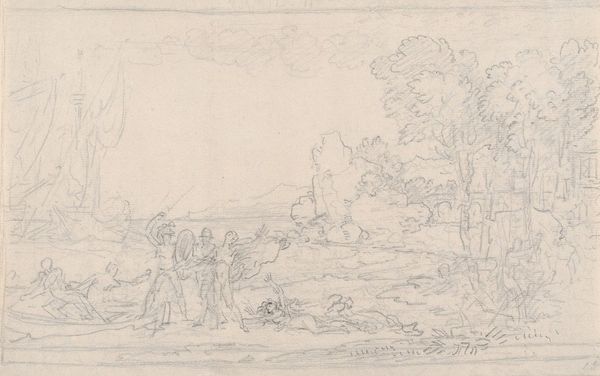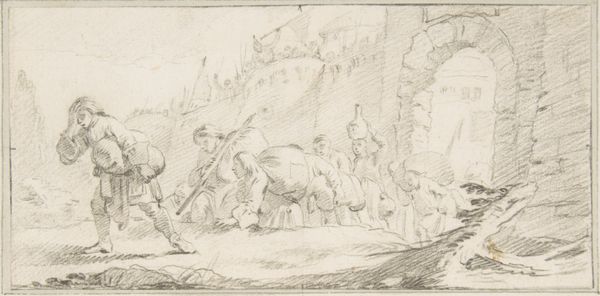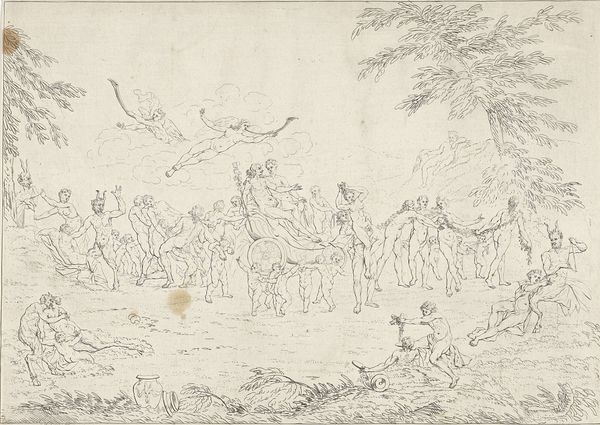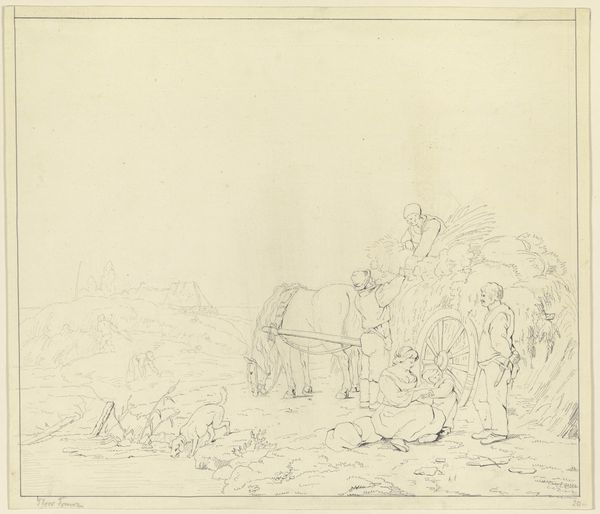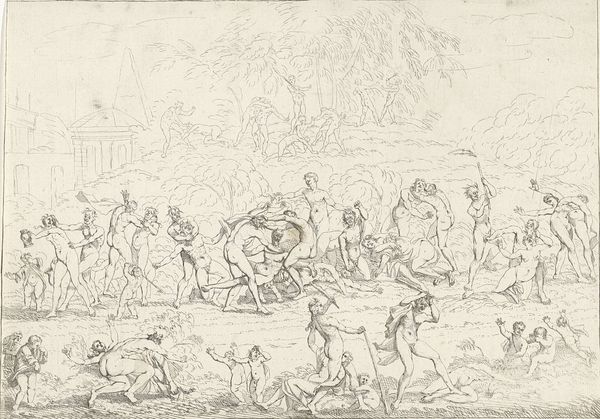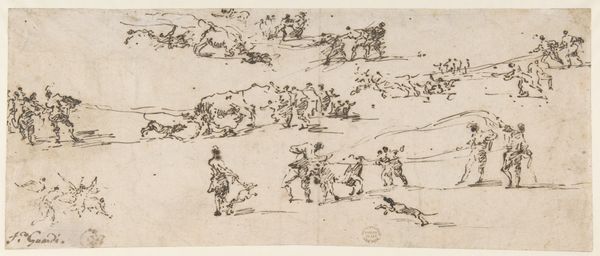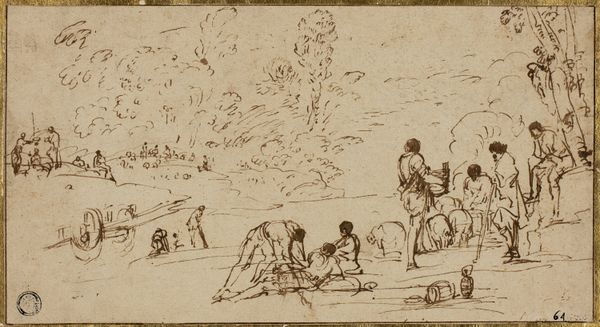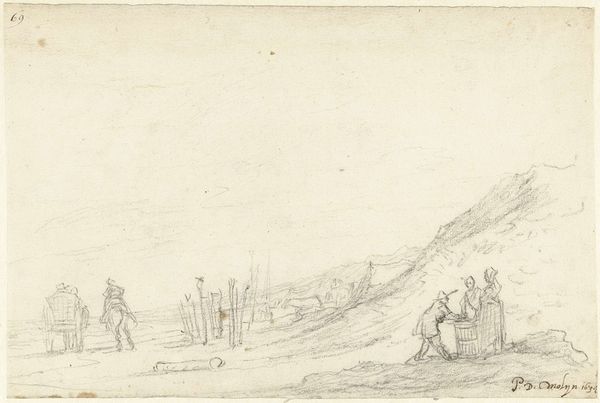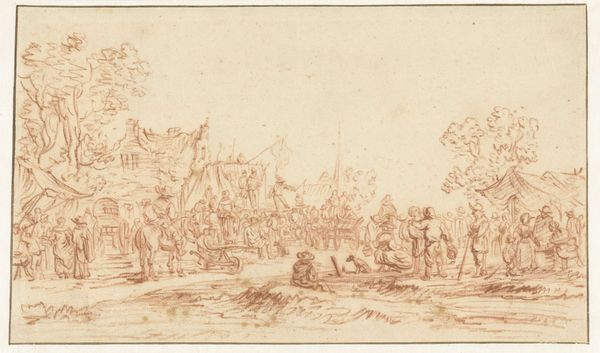
drawing, paper, ink, pen
#
drawing
#
narrative-art
#
baroque
#
pencil sketch
#
landscape
#
paper
#
ink
#
pen-ink sketch
#
pen
Dimensions: height 189 mm, width 280 mm
Copyright: Rijks Museum: Open Domain
Rembrandt van Rijn rendered "The Annunciation to the Shepherds" in pen and brown ink, a technique that lends itself to dynamic compositions and emotional depth. Notice how the composition is structured around a stark contrast between the earthly realm of the shepherds and the divine announcement in the skies. Rembrandt employs loose, energetic lines to capture the shepherds' awe and the ethereal quality of the angels. The materiality of the ink on paper allows for a range of tonal values, creating depth and shadow that enhance the drama of the scene. Semiotically, the upward gaze of the figures and the divine light can be interpreted as signs pointing to spiritual awakening. Consider how Rembrandt's approach challenges traditional representations of religious scenes. Rather than idealized figures, he depicts ordinary people in a raw and immediate style. This emphasis on human emotion and experience destabilizes conventional artistic values, inviting viewers to engage with the artwork on a personal level. The interplay between light and shadow serves not only to illuminate the scene but also to obscure certain details, leaving room for individual interpretation and contemplation.
Comments
rijksmuseum about 2 years ago
⋮
In this third Annunciation to the Shepherds, the scenario is considerably calmer than in the two earlier versions. The angel occupies a much less prominent place. The standing shepherd raises his arms in terror and amazement, but makes no move to flee. The animals seem oblivious: the sheep sleep peacefully, the cows remain undisturbed.
Join the conversation
Join millions of artists and users on Artera today and experience the ultimate creative platform.
